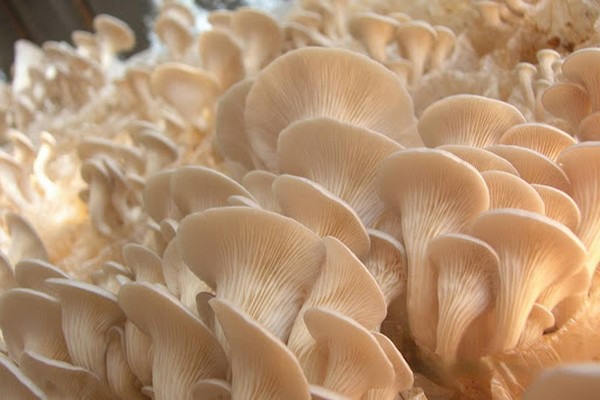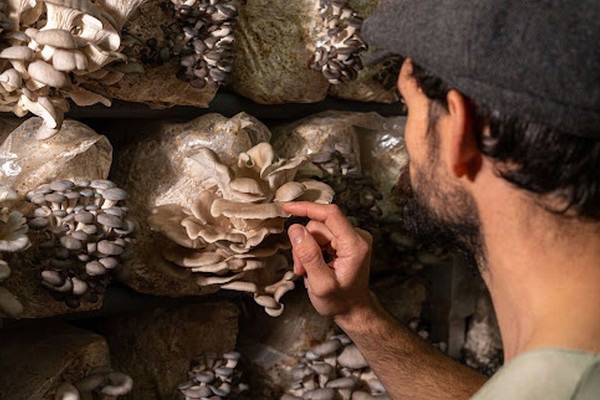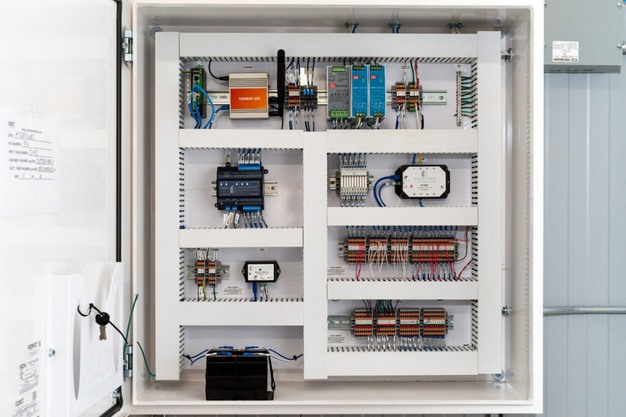"Mushroom cultivation is more than just a niche farming practice—it's a thriving sector with immense market potential. Whether you're looking to tap into the high-profit fresh mushroom market, explore specialty varieties, or develop health-focused mushroom products, the opportunities are diverse and promising. However, achieving success in mushroom production requires careful attention to facility design, especially when growing in controlled environments," says the Ceres Greenhouse Solutions team.
Ceres understands that while many of their clients are focused on optimizing sunlight-based greenhouses, the same principles of energy efficiency and environmental control apply to indoor mushroom cultivation. "Designing a successful mushroom grow house involves balancing a range of critical elements, from temperature and humidity control to lighting and space utilization."
In this article, Ceres will explore the essential components of indoor mushroom production:
- A sealed and insulated growing environment
- Facility layout for the different growing stages
- Sterilization equipment
- Filtration and ventilation systems
- Heating and cooling systems
- Sensors and controls
- Custom lighting setups
- Humidifiers and/or fogging systems
Mushroom cultivation process
Before discussing key facility design components, let's go over the different stages of indoor mushroom cultivation:
Inoculation
Mushrooms are typically grown by introducing cloned mycelium tissue (a cluster of fungal threads that form the vegetative body of a fungus) to sterilized sawdust or cereal grains and then expanding that material to bulk substrates – primarily supplemented sawdust but also other mediums such as straw, wood chips, coffee grounds, etc. This step in the process is called inoculation. Before inoculation, the substrate must be sterilized or pasteurized to eliminate competing microorganisms. A common way to sterilize substrate material is by using an autoclave or ultra pasteurization system – pieces of equipment that use temperature and in some cases pressure to kill microbes in a sealed chamber.
Incubation
After substrates are inoculated with the mycelium, they are stored in a well lit and climate controlled environment to allow the mycelium to colonize the substrate fully. This step usually takes on average four weeks but for some species can take as much as 12. 
Fruiting
After incubation, the fully colonized substrates are moved to a fruiting chamber with conditions conducive to mushroom formation (e.g., detailed temperature control, increased humidity, oxygen, and light exposure). The mycelium will begin to form small mushroom primordia or "pins." Some growers skip this stage entirely if their goal is to solely produce and harvest mycelium. Mycelium has a wide range of applications, including as a meat substitute, supplement ingredient, textile material, eco-friendly packaging, soil decontaminant, and for any process involving organic decomposition.
Harvesting/Processing
Fruiting mushrooms are harvested at their desired size and quality. Post harvest, mushrooms will be packaged or processed in various ways to extend their shelf life, enhance their value, and cater to different market needs.
Important design considerations and technology integrations
The Ceres team explains that in the inoculation and incubation stages of mushroom cultivation, the facility design and equipment choices are critical to ensuring successful growth and high-quality yields.
"During inoculation, creating a clean room environment is essential to maintaining sterility and minimizing contamination risks. This requires implementing a positive pressure environment utilizing HEPA filters and proper ventilation systems to control air quality. Precise temperature and humidity control are also crucial, with the use of sensors and alarms to maintain optimal conditions for the mushroom species being cultivated."
For the incubation phase, designing temperature-controlled incubation chambers or rooms is vital to provide the right environment for mycelial colonization. "This involves integrating heating and cooling systems with precise controls to cater to the specific temperature needs of different mushroom species. This area is typically 2:1 to 3:1 of your fruiting room area depending on the species you intend on growing. Contrary to popular belief the incubating blocks do benefit from red spectrum lighting during this period."
Maintaining high humidity levels is also important, which can be achieved using humidifiers or misting systems, complemented by humidity sensors to monitor and adjust levels as needed.
"Proper ventilation is necessary to ensure adequate airflow, providing oxygen for mycelial growth and preventing CO2 buildup. Air circulation fans and exhaust systems should be installed to maintain air quality."
For the fruiting stage of mushroom cultivation, maintaining the right temperature and humidity levels is also essential. "Although, during the fruiting stage, growers will typically set a cooler temperature compared to the incubation stage."
High humidity levels are also critical to prevent mushrooms from drying out and to promote healthy growth. "Again, this can be managed using humidifiers and misting systems."
Although mushrooms do not require light for photosynthesis, most species need light to initiate fruiting since they are phototropic and to develop their proper pigmentation. "It's important to understand what light spectrum is ideal for your specific mushroom variety and then install lighting systems with adjustable intensity and timers to simulate natural light cycles. The light should be diffuse and not too intense to avoid overheating or drying out the substrate."
With the fruiting stage as well as the incubation stage, it's critical to maintain proper airflow and prevent stagnant conditions, which can lead to poor mushroom development or contamination. "Proper airflow helps to ensure even growth and reduce the risk of mold and other pathogens. Some mushroom species also require precise regulation of available oxygen, which should be monitored closely to promote optimal fruiting."
Additionally, automated control systems for temperature, humidity, and CO2, along with data loggers to track environmental conditions, further support the maintenance of consistent and ideal growing conditions for your entire facility, Ceres says.
The Ceres mushroom solution
For growers looking to design a new mushroom facility, Ceres Greenhouse Solutions offers a comprehensive solution.
"Our non-glazed mushroom facilities are designed with fully sealed rooms, which are crucial for maintaining a controlled environment free from external contamination. This setup, combined with our integrated climate control systems, ensures precise regulation of temperature and humidity—both essential for successful mushroom fruiting."
"The Ceres EcoPack, our proprietary HVAC(D) system, is tailored specifically to meet the demands of mushroom growing environments. The EcoPack provides exceptional accuracy in managing temperature and humidity levels, two critical factors for optimal mushroom growth. By integrating seamlessly with our facility design, this system ensures that the conditions are meticulously controlled to support healthy mycelial development and fruiting," the team explains.
The Ceres SunSense controller offers a robust and centralized solution for managing all aspects of the growing environment. "By leveraging the SunSense controller, growers can achieve a highly efficient and responsive environment for mushroom cultivation. The system's centralized control, comprehensive monitoring, and integration with lighting and outdoor weather make it an invaluable tool for maintaining the ideal conditions necessary for optimal mushroom growth and maximizing yield."
"Beyond our expertise in facility design and climate control systems, Ceres also excels in sourcing and integrating essential equipment for mushroom cultivation, including lighting fixtures, sterilization equipment, and shelving systems (as well as ready to fruit mushroom blocks so you can hit the ground running- (this is a service we could subcontract for you if interested)."
"Our design team carefully considers factors such as GMP (Good Manufacturing Practices), MGAP (Mushroom Good Agricultural Practices), and efficient workflow when planning your indoor cultivation facility. This holistic approach ensures that every aspect of your facility is optimized for both operational efficiency and compliance with industry standards," Ceres concludes.
For more information: Ceres Greenhouse Solutions
Ceres Greenhouse Solutions
info@ceresgs.com
www.ceresgs.com
